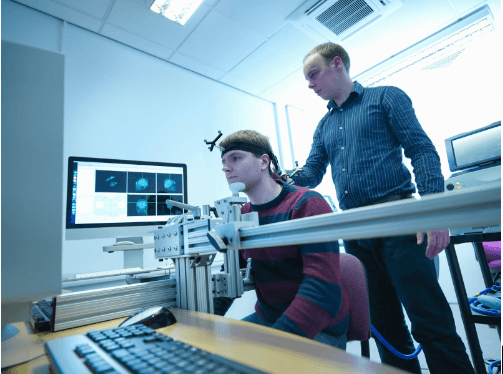Since electromagnetic pulses are used during the procedure, you will be asked to remove any jewelry or metallic objects from your person before the process begins.
The TMS technician measures your head to identify points where the magnetic coil will be placed. You may also be given earplugs to minimize the magnetic clicking sound of the device when it is in operation.
Next, the magnetic coil is placed over the area where your prefrontal cortex is located, and the treatment begins. You may hear a clicking sound and feel a tapping sensation beneath the coil.
Each session lasts about 30 minutes, and you will be seated in a chair and stay awake throughout the entire duration. There is no downtime with this procedure, and you can go about your normal day immediately after.




